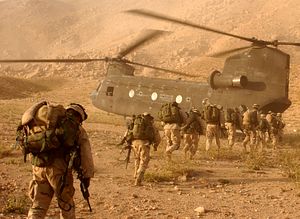U.S. President Donald J. Trump’s new Afghanistan policy has been criticized for making vague commitments. Trump in his Afghanistan speech said that the United States “will fight to win.” However, the question remains: how exactly does Trump plan to win the war in Afghanistan?
Arguably, the new geopolitical configuration of the Asia-Pacific region has fundamentally changed the nature of Afghanistan’s militancy. While Trump may have declared that he is interested in winning in Afghanistan, the actual U.S. interest in Afghanistan now is not “winning the war” anymore. The aims have seemingly shifted from rooting out militancy in Afghanistan to maintaining an American presence in the country in order to face-off with new geopolitical realities, which in a broader context have direct implications for U.S. economic and security interests globally.
The nature of the insurgency in Afghanistan and regional power politics have rapidly changed during the last decade. While the United States has gradually lost its influence in the country, a number of regional and extra-regional states have developed strong pockets of influence in Afghanistan. China has worked hard to build soft influence in Afghanistan, which is at times used to the detriment of U.S. interests. Russia is also proactively and assertively looking to defend its security and economic interests in Afghanistan.
One can argue that the policymakers in Washington have given up on the idea of “nation-building” in Afghanistan simply because it doesn’t help achieve the United States’ short or long terms goals in the region. Trump in his speech clearly showed frustration regarding the massive economic resources that Washington pours into the Afghan economy every year. One of the reasons that Trump wants India’s broad presence in Afghanistan is due to the former’s desire to divide Kabul’s economic burden with someone who shares America’s interests in the region. By inviting greater Indian involvement in Afghanistan, Trump demonstrated that the United States can counter Pakistan, Russia, and China’s growing influence in the country with its own close ally in the region.
Moreover, Trump’s talk regarding India’s role in Afghanistan is an expression of annoyance where his country’s regional rivals are gaining the upper hand in shaping Kabul future while New Dehli remains very cautious in terms of making any engagements to Kabul. It remains to be seen whether India is going to increase its role and presence in Afghanistan after Trump’s open support and endorsement. If history is any guide, it’s highly unlikely that India will increase its presence in Afghanistan only because it has Washington’s endorsement now.
While New Dehli has long-term strategic interests in Afghanistan, it is not interested in appearing in a role where it’s seen as doing America’s bidding. Moreover, unlike the past two decades, Afghanistan is not just a venue where India and Pakistan can settle their disputes; rather, it’s a country which now houses major economic and security stakes of other major regional states such as China and Russia. New Delhi, with all its concerns regarding Islamabad’s role in Afghanistan, is not interested in a zero-sum game.
Trump, in his new Afghanistan policy, not only criticized Pakistan for its alleged support for militant groups, but also warned Islamabad of serious action if the country didn’t relinquish support for insurgent groups in Afghanistan. “We have been paying Pakistan billions and billions of dollars at the same time they are housing the very terrorists we are fighting. But that will have to change, and that will change immediately,” Trump said. Analysts warn against pushing Pakistan to an extent where the country stops its cooperation with Washington altogether
Pakistan, on its part, has lived through and outmaneuvered such warnings and threats in the past without making any substantial changes in its security policy. “Pakistan’s support for militancy will only stop when the cost of that policy is greater for them than the perceived benefit,” says former Pakistani Ambassador to the United States Hussain Haqqani, for example.
Is Trump willing to target militant safe havens in Pakistan, particularly in areas beyond the country’s tribal region? If the answer is yes, then will it be enough to change Pakistan’s policy? Clearly, any U.S. military operation inside Pakistan is likely to open another round of hostility between Islamabad and Washington, which will surely spread all across the region. These are some of the calculations that are going to be important before the United States decides to punish Pakistan.
Washington’s “war objectives” in Afghanistan have changed altogether. While the U.S. cannot win against the Taliban and other militant groups, what Washington can do in Afghanistan is ensure that its presence in the country remains entrenched. Washington’s protracted stay in Afghanistan will create obstacles for China, Russia, Iran, and Pakistan’s economic ambitions, which are directly and indirectly opposed to what the U.S. hopes to achieve in the region.
Regardless of what Trump may have said in his Afghanistan policy speech, the U.S. is unlikely to achieve its new counter terrorism goals. Further diplomatic assertiveness and the use of military means in and outside Afghanistan are likely to put the U.S. on a collision course with other regional states, for neither Afghanistan nor the neighboring states seem ready to endorse Washington’s war plans in the country. U.S. new Afghanistan policy is more of a frustration than a strategy where Washington expects cooperation of regional states through threats and appeasements just to ensure its own foothold in the country.

































